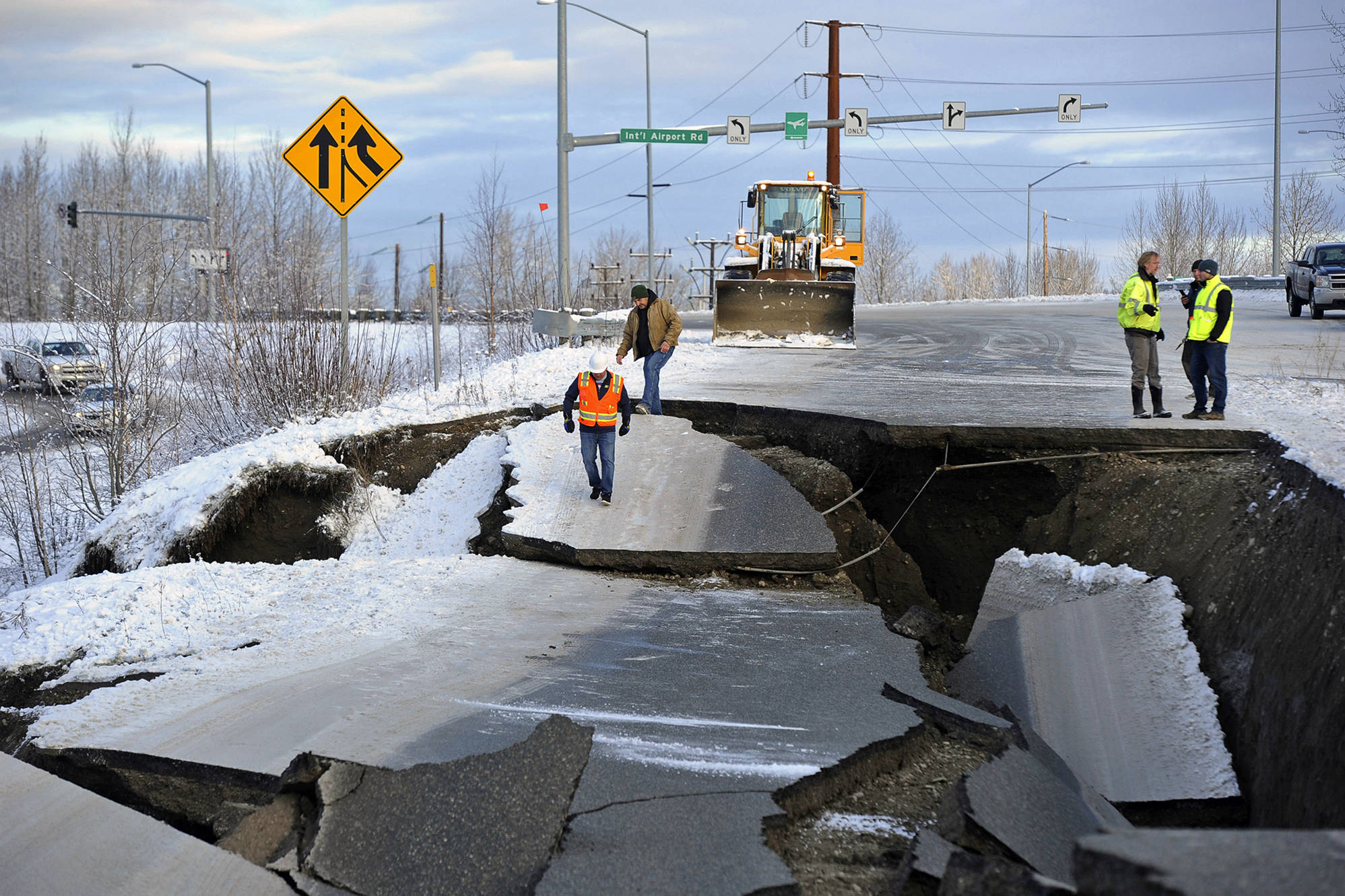On Nov. 30, Alaska’s southcentral region experienced a magnitude 7.0 earthquake ranked as the second most damaging in our state’s history in the last 50+ years.
Fortunately, despite extensive property damage, there were few injuries and no lives were lost. Largely, this was due to lessons learned after Alaska’s massive 1964 (9.2) quake that claimed 131 lives and caused billions in property damage.
The 1964 Good Friday Earthquake was over 150 times bigger than last month’s earthquake. Who can forget the pictures of destruction in downtown Anchorage or the devastation caused by the ensuing tidal wave that destroyed Chenega, and caused destruction in Kodiak, Whittier, Seward and Valdez? Coastal cities as far away as Washington, Oregon and California were also damaged and are stark reminders of the unbelievable forces that can strike without warning.
Only one tsunami warning center existed in the United States then. The 1964 earthquake reinforced the need to better educate the public about tsunami hazards and to more quickly issue tsunami warnings to local authorities.
While no significant tsunami was generated this time, Alaska’s warning system worked as advertised. A tsunami warning was issued within minutes based on initial projections and then cancelled shortly thereafter as information was obtained from sensitive ocean sensors.
The Good Friday quake also changed the way the state rebuilds and responds to disaster. More stringent building standards were mandated later to help prevent structural damage. A broad earthquake-monitoring system was created to gather data and help seismologists predict future earthquakes and their potential damage.
Better preparedness, improved building standards, and faster response all worked together to help mitigate the impacts of this latest event and Alaskans should be proud of their resilience and orderly response to disaster.
While this is reassuring, the Alaska Earthquake Center reported over 150,000 earthquakes in Alaska over the last five years. Thirty-one of those had magnitudes of 6.0 or greater, and four had magnitudes of at least 7.0.
So what lessons can be gleaned from this latest seismic event?
First, we must remain vigilant in the event a similar earthquake impacts a populated area in the future.
Since events like these, which, despite our best efforts, can be unpredictable, we shouldn’t lose sight of the importance of maintaining and improving critical infrastructure throughout the state along with the equipment and resources that support it.
What am I talking about? Roads, water and sewer systems. Our electrical grid and communication systems. Ports, harbors and airports. Are our bridges, runways, control towers, tank farms and pipelines strong enough?
Are they all being maintained and sufficiently protected against major damage in the event of a catastrophic event?
Do our first responders have the necessary training and funding to maintain effectiveness?
And, in the worst-case scenario, do we have backup plans, redundancy and emergency preparedness procedures in place that will fulfill basic needs until repairs, reconstruction, or replacement can be accomplished?
These are questions for our city and state administrators and our elected officials.
This kind of self-examination isn’t often popular with politicians or the public because it usually doesn’t result in shiny, new buildings or another trendy government program. Yet we must recognize that conserving and maintaining existing infrastructure and resources truly is a core function of government.
Alaska’s pioneer spirit and self-sufficiency were on full display during and after this earthquake.
There were many stories of Alaskans coming together to rescue or help others. Schools, local governments, and organizations were prepared and responded rapidly. Amazingly, despite the widespread damage, authorities were able to re-open many buildings and roads within days.
All without federal help.
The rest of the country watched in awe.
Indeed, Alaska’s response to this earthquake is a hopeful metaphor for limited government focused on its proper role and a herald of our new incoming administration.
This was nothing less than an example of what we can do for ourselves instead of becoming more and more reliant on an ever-larger government bureaucracy.
• Win Gruening retired as the senior vice president in charge of business banking for Key Bank in 2012. He was born and raised in Juneau and graduated from the U.S. Air Force Academy in 1970. He is active in community affairs as a 30-plus year member of Juneau Downtown Rotary Club and has been involved in various local and statewide organizations. He contributes a regular column to the Juneau Empire. My Turns and Letters to the Editor represent the view of the author, not the view of the Juneau Empire.

